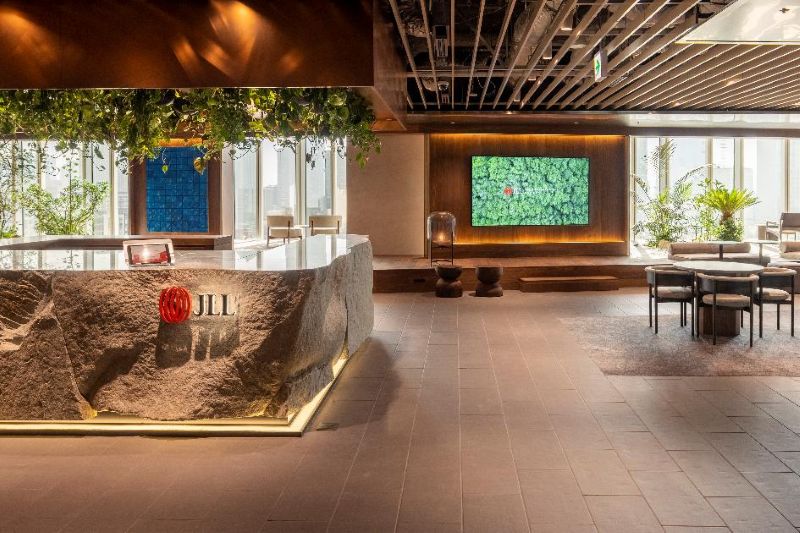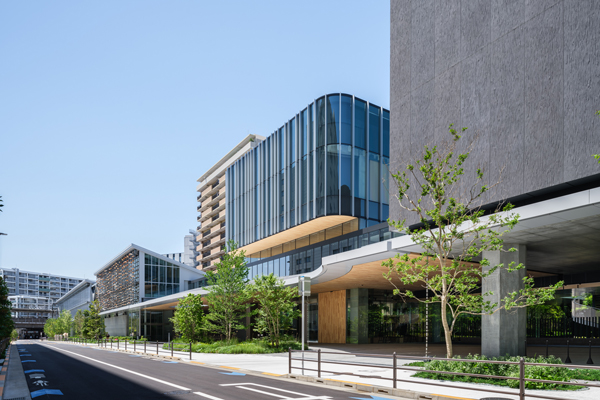
Project name: NOVARE Hub
Certification system: LEED BD+C: New Construction
Certification level: Platinum
Date of certification: January 16, 2024
Speaker 1: Green Building Japan, Mr. Koda
Speaker 2: Shimizu Corporation, Mr. Kobayashi
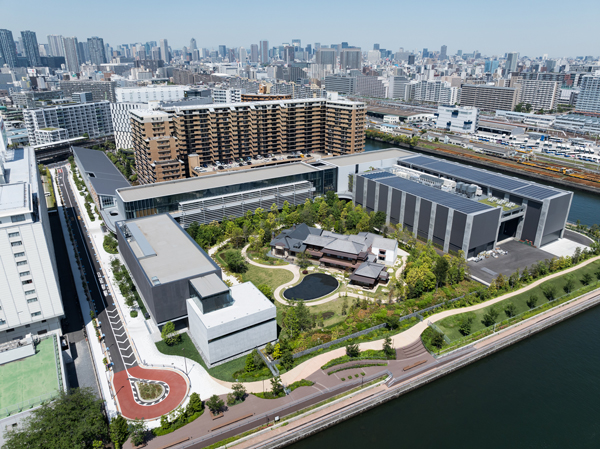
Speaker 1: Could you please provide an overview of the facility?
Speaker 2: The Smart Innovation Ecosystem NOVARE is a project developed by Shimizu Corporation, designed to foster innovation across business structures, human resources, and technology. NOVARE Hub, which has achieved LEED Platinum certification, is located in the NOVARE’s central area, serving as a connection point for all the facilities.
Speaker 1: Thank you for the opportunity to tour the facility earlier. One feature that particularly caught my attention was the ultra-personalized air conditioning system. Could you elaborate on the challenges encountered in developing this system?
Speaker 2: The system we developed is called Pixel Flow. The fans are positioned on the floor at a 600mm pitch. By utilizing location data for each user, we can adjust the fan speed and air volume—boosting airflow for those who feel hot, and reducing it for those who feel cold. This allows us to create an environment that is tailored to individual preferences while simultaneously reducing overall energy consumption.
The fans themselves are PC fans, which allowed us to introduce them at a lower cost. However, due to the large number of fans, they cannot be controlled by a typical air conditioning control system. As a solution, we adopted a control system commonly used in music concerts and stage lighting to manage the fans effectively.
Speaker 1: Another feature that stood out was the No Address System. Could you explain how it works?
Speaker 2: Activity-Based Working enables individuals to work in spaces that suit their preferences and enhance productivity, a concept increasingly adopted in modern office environment. In addition, we implemented the No Address Office concept, where all office furnishings —tables, chairs, plants, and whiteboards – are equipped with casters. For instance, when a project begins, a small team can create a work station cluster, and as the team grows, additional fixtures can be added. This flexibility allows employees to choose their preferred workspace.
Speaker 1: Could you tell us more about the LEED certification process for this project? What motivated you to pursue LEED certification?
Speaker 2: Many of our clients are increasingly interested in LEED certification, and we have an in-house team that is dedicated to supporting the certification process. As a result, it was decided early on that this project would aim for LEED certification.
Speaker 1: Shimizu Corporation’s Tohoku branch, among others, has also achieved LEED certification. Could you share some insights from Shimizu’s experience with LEED, such as accumulated know-how?
Speaker 2: Each project has its own unique requirements and regional factors, and we treat each project—whether for our own or our clients—individually. However, our extensive experience has enabled us to develop valuable expertise in securing LEED points and ensuring the success of the certification process.
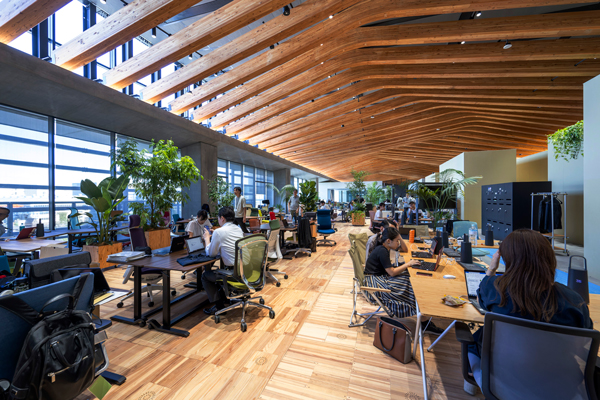
Speaker 1: Thank you. As you mentioned, more clients are showing interest in LEED. What do you think is driving this trend?
Speaker 2: Yes, many international companies actively seek properties with LEED certification. Some property owners even disclose their preferable occupancy rates for LEED-certified buildings in their annual reports.
Speaker 1: Thank you. Regarding the LEED certification process, it is common to work with consulting firms. How did this project handle that?
Speaker 2: For this project, we worked with Woonerf, alongside Shimizu Corporation’s internal LEED consulting team. Both teams collaborated closely, combining their expertise like a “double cast” approach.
Speaker 1: With more team members involved, did this make the process more challenging?
Speaker 2: Not at all. The diverse expertise and a shared understanding made the process run smoothly. Even when challenges arose, the experience within both teams allowed us to exchange ideas and collaborate effectively.
Speaker 1: In Japan, CASBEE, a domestically developed certification, is widely used. How do the challenges of pursuing LEED certification compare to those of CASBEE?
Speaker 2: To pursue LEED certification, it is important to analyze how its criteria align with Japanese standards. For example, Japan has abundant water resources, which isn’t the case everywhere, so adjustments are needed to reconcile these differences. Since CASBEE is a domestic certification, this kind of alignment isn’t required.
Additionally, LEED includes distance standards for materials transportation. Although Japan has a long north-south span, its extensive railway and truck systems make transportation efficient, even over long distances. LEED doesn’t fully account for this. It would be helpful if LEED recognized Japan’s regional characteristics in this regard.
Speaker 1: One aspect of the LEED certification is the installation of foot mats at the entrances and exits. Could you tell us more about this?
Speaker 2: LEED requires foot mats of a specific length at entrances and exits to minimize contaminants from entering the building. However, not only in this project, but also in Tokyo, most streets are paved, and people rarely enter buildings with dirt or mud on their shoes.
While we considered installing the foot mats to earn LEED points, we also assessed their usability and ease of maintaining the office entrance. Ultimately, we decided to prioritize earning points through other aspects of the project, as the foot mats were not as relevant to the local context.
Speaker 1: One more question—did you face any challenges with the building materials?
Speaker 2: During the design phase, although we considered materials that met LEED standards, some became unavailable due to the COVID-19 pandemic. Additionally, some materials we assumed were certified only met the technical requirements but lacked official environmental certification.
Speaker 1: Would it be beneficial if more materials came with environmental certification from manufacturers?
Speaker 2: Yes, it would be helpful if LEED could recognize local materials that meet Japan’s standards. For global building material manufacturers, I believe they would be willing to provide certified products, even at a slightly higher price, as LEED continues to evolve and address embodied carbon issues. However, it is more challenging for local Japanese companies. I am not suggesting relaxing the standards, but since these local products already meet Japanese standards like JIS, it would be helpful if there were a way to acknowledge these certifications within the LEED system, especially since certified materials can help earn LEED points.
Speaker 1: Finally, what do you believe is necessary for environmental certifications to gain wider acceptance in society?
Speaker 2: Clients who own or use properties with environmental certification can gain a competitive advantage by promoting it. This visibility will naturally encourage others to pursue certification as well.
Speaker 1: Thank you very much for your insights. That concludes our interview.
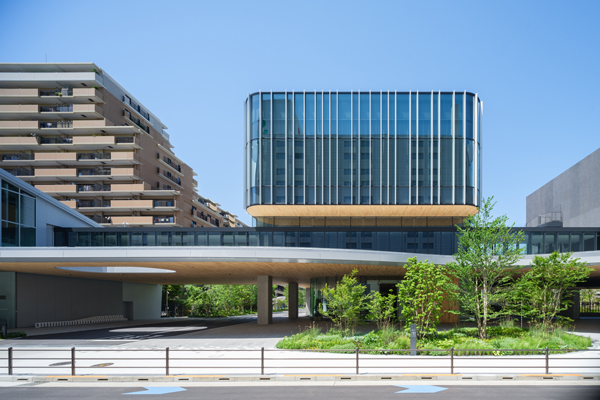
Click here for Japanese version
日本語版はこちら


